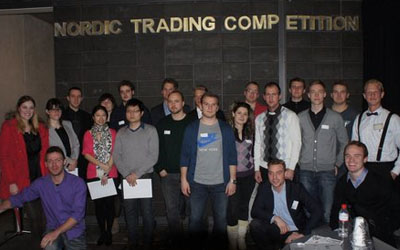Every day, as Polygon, Layer 2 scaling solution that is Ethereum-compatible, keeps growing in popularity, there is an increasing need to ensure the security of its chain. An approach to securing the Polygon chain is through a combination of technical measures and community involvement. This article will examine some methods for securing the Polygon chain.

1. Proof-of-Stake (PoS) Consensus Mechanism
The PoS consensus mechanism is one of the ways through which the Polygon chain can be secured. Validators in this system stake their MATIC tokens to take part in block production and validation process. The incentive to secure network resides in decentralized network’s shared value. Slashing occurs whereby validators’ staked tokens are taken if any form of malicious behavior is detected from them.
2. Decentralization and Validator Diversity
Security for the Polygon chain requires encouraging decentralization and validator diversity. Having many different validators stops any one entity from controlling the network. To increase decentralization, it should make it easier for people to become validators by lowering barriers and also encourage users to have multiple validators with whom they stake their MATIC tokens.
3. Regular Software Updates and Bug Bounties
Updates should be made regularly while addressing potential vulnerabilities in order to keep safe the polygon chain. A regular software update along with security audit should be conducted so that weaknesses within can be identified and patched up accordingly also a bug bounty program would motivate security researchers into finding any exploitable bugs so that they are fixed before being exploited by hackers.
4. Secure Wallet Practices
Users contribute significantly towards securing the polygon chain by practicing safe wallet behaviors like storing large amounts of MATIC tokens on hardware wallets, having two factor authentications for extra security or keeping private keys well hidden amongst other things that involve keeping this information confidentially secreted.. Educating users about secure wallet practices plus providing tools and resources can help prevent unauthorized access to funds.
5. Community Vigilance and Education
Security of the chain is a responsibility of Polygon community members. Reporting suspicious activities or possible vulnerabilities by encouraging community members can help identify threats quickly and deal with them accordingly. Also, educating users about security best practices and providing resources that enhance their awareness will empower them in making informed choices that will boost the general security of the network.
6. Collaboration with Security Experts
Working together with security experts and auditors, including those within the community who stakepolygon, can offer insights and recommendations for enhancing the security of Polygon chain. Periodic security audits and assessments should be conducted to find out any potential weaknesses in the system as well as guide on effective ways to handle it.
7. Implementing Advanced Security Features
As technology evolves so too does blockchain industry, thus by introducing more advanced protection characteristics, such as usage of zero-knowledge proof (ZKP), multi-sig wallets for improved safety purposes, and other cryptographic primitives to make chain harder for potential attackers are just some examples through which depth strength could be added into Poligon Chain.
Summary, a comprehensive strategy is required to secure the Polygon chain through technical approaches, community involvement and continuous vigilance. By capitalizing on the advantages of Proof-of-Stake consensus algorithm, decentralization promotion, periodical security audits conducting safe wallet practices, promoting the community participation, teaming up with professionals in security matters and implementing advanced security features could help in maintaining high level of security for the Polygon chain which would ensure it remains at the forefront as a leading L2 scaling option within blockchain ecosystem.
Tradersdna is a leading digital and social media platform for traders and investors. Tradersdna offers premiere resources for trading and investing education, digital resources for personal finance, market analysis and free trading guides. More about TradersDNA Features: What Does It Take to Become an Aggressive Trader? | Everything You Need to Know About White Label Trading Software | Advantages of Automated Forex Trading









































